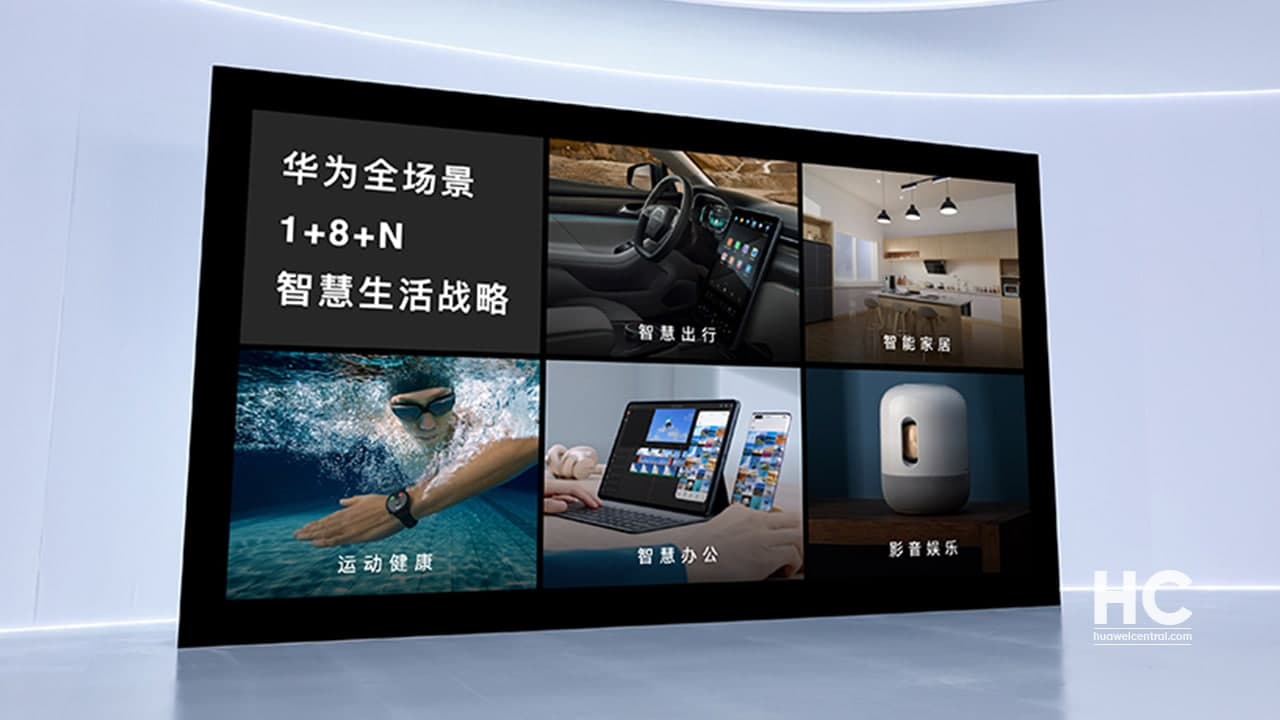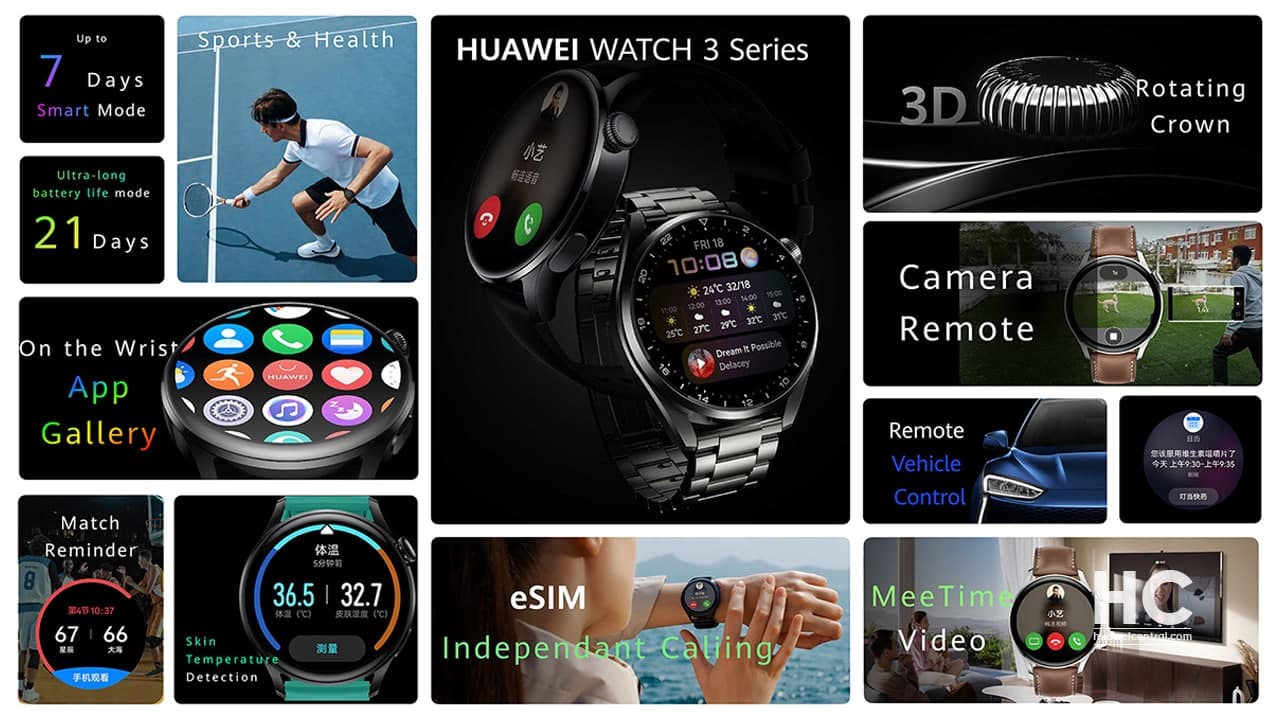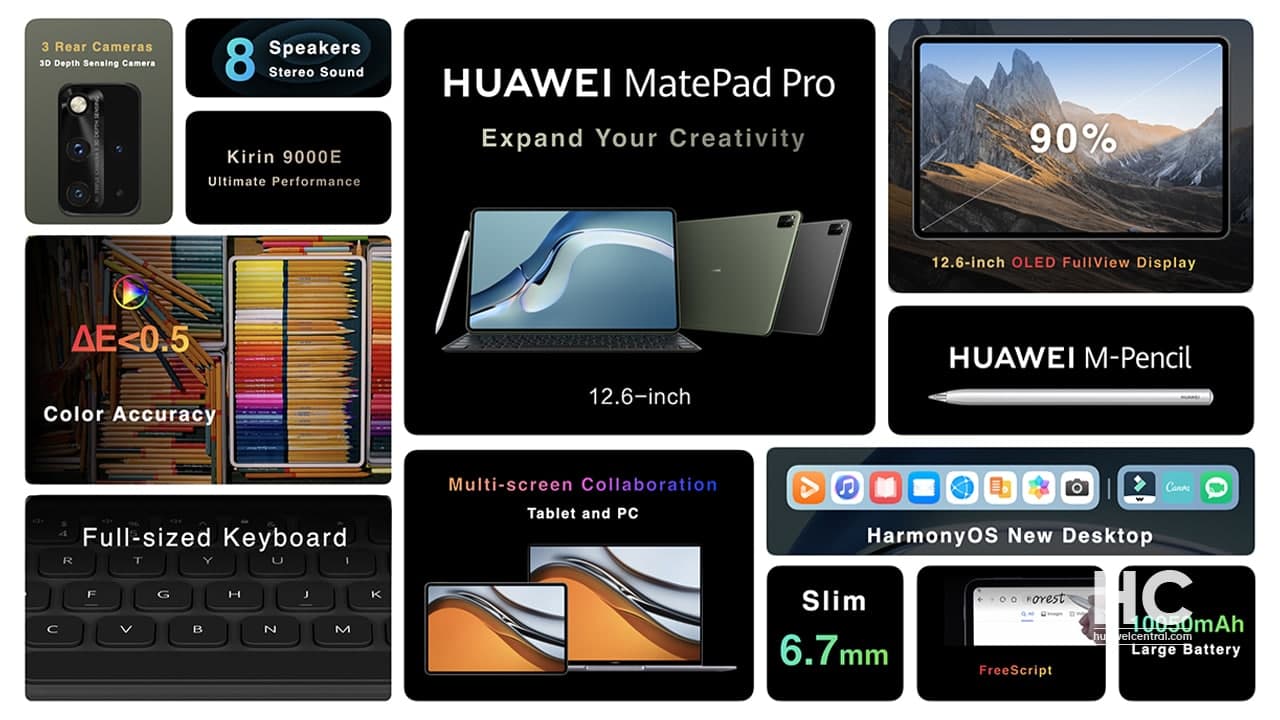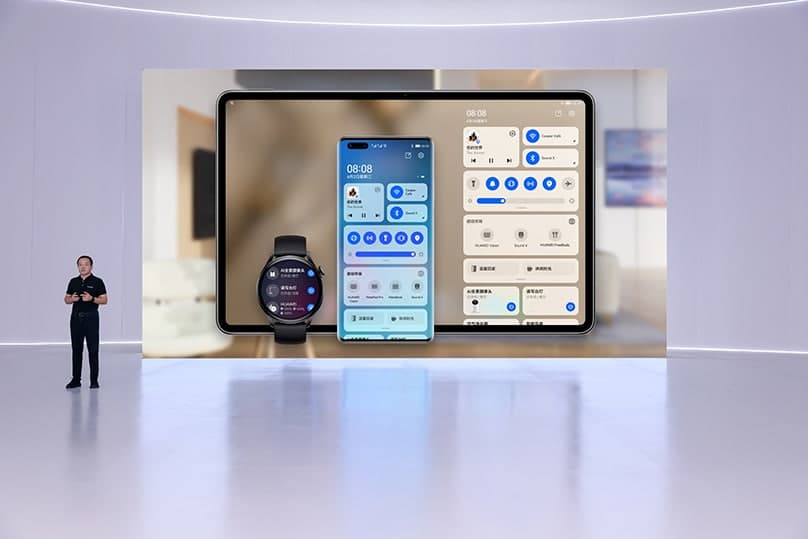HarmonyOS
HarmonyOS Launch Event Recap: Huawei Watch 3, MatePad Pro, many eligible devices and more

On June 2, Huawei launched a number of new smart technologies equipped with HarmonyOS 2, including new versions of the Huawei Mate 40 series, new versions of Huawei Mate X2, Huawei Watch 3 series, Huawei MatePad Pro, and other mobile phones, smartwatches, and tablet products.
At the same time, it brings a new generation of semi-open active noise reduction wireless Bluetooth headset Huawei FreeBuds 4, and two high-end displays Huawei MateView and Huawei MateView GT. In addition, “hundreds” of devices such as Huawei mobile phones and tablets will successively launch HarmonyOS 2 upgrades.
According to Huawei, HarmonyOS is designed to address this problem. As a next-generation operating system for smart devices, HarmonyOS provides a common language for different kinds of devices to connect and collaborate, providing users with a more convenient, smooth, and secure experience.
HarmonyOS uses distributed technology to meet the varied needs of all types of different devices with a single system, enabling flexible deployment as needed. HarmonyOS also combines previously independent devices into a cohesive and holistic Super Device that integrates all hardware and resources to freely leverage the capabilities of its component devices based on the user’s real-time needs.
For developers, HarmonyOS allows cross-platform development and cross-device deployment of apps, making the development of apps across devices easier than ever before.
Huawei Watch 3 Series:
Huawei’s brand-new flagship smartwatch, the Huawei Watch 3 Series, redefines fashion on your wrist. Featuring a curved glass screen and 316L stainless steel case, this stylish watch comes complete with a brand-new 3D rotating crown that senses different levels of pressure and provides haptic feedback in response to user input, making the watch both comfortable to wear and easy to operate.
The Huawei Watch 3 Series also allows you to make and receive phone calls and listen to music using the same phone number and data plan as your smartphone.
The Huawei Watch 3 Series runs on HarmonyOS 2, which allows it to integrate seamlessly with Huawei smartphones to serve as a multifunctional travel assistant. Functionality flows directly from your smartphone to your wrist, making all ride-hailing and flight information available at a glance.
On the ride home from the airport, if you’re taking public transit, both your watch and your phone will remind you when you’re getting close to your final destination. You never have to worry about missing your stop again1.
The Huawei Watch 3 Series also serves as a professional fitness & health manager that supports more than 100 workout modes. In addition to a broad range of healthcare support options, the watch can now monitor skin temperature with a new, high-precision temperature sensor. It also supports fall detection and SOS functions so users can monitor and manage their health in real-time.
The Huawei Watch 3 Pro features an ultra-long battery life, which lasts five days in smart mode and 21 days in ultra-long battery life mode. The Huawei Watch 3, in turn, has a battery life of three days in smart mode and 14 days in ultra-long battery life mode.
Huawei MatePad Pro:
Huawei MatePad Pro is equipped with a gorgeous 12.6-inch OLED full screen with a screen-to-body ratio of 90%, making it the world’s highest screen-to-body tablet.
The screen achieves an ultra-high color accuracy of ∆E<0.5, the display effect is comparable to that of a professional monitor, and it also has an extreme contrast ratio of 1,000,000:1 and supports the DCI-P3 color gamut.
Equipped with Kirin 9000 series chips, bringing strong performance. With the help of HarmonyOS’s distributed data management and distributed task scheduling capabilities, Huawei MatePad Pro can efficiently cooperate with mobile phones and PCs to double productivity and creativity in different scenarios such as office and creation.
With the latest features, such ass PC multi-screen collaboration, mirror, and extended mode, this tablet provide you with a complete solution and a package that is ready to plug into a big screen such as a monitor.
The latest generation of Huawei MatePad Pro devices comes with a second-generation stylus Huawei M-Pencil, which uses a new platinum-plated refill, accurate handwriting, ultra-low latency, and supports 4096 pressure levels.
The pencil also supports multiple smart interactions such as double-click switching, one-stroke forming, and smart forms to make input more coherent and continuous inspiration.
HarmonyOS, a new operating system:
The new Control Panel on HarmonyOS supports simple and intuitive connections through a drag-and-integrate feature that allows users to freely connect the devices they want to be based on specific scenarios.
For example, if you want to watch a movie at home late at night, all you have to do is open up the Control Panel and drag the smart screen icon to your phone icon, and the movie jumps directly from your phone to the TV.
If you’re wearing your Huawei FreeBuds 4, you can then drag the earphone icon to the phone icon, at which point the movie will play on your smart screen while rerouting its sound through your FreeBuds. This is just one example of the Super Device experience.
Aside from this, the new Task Center allows apps to travel between different devices at will without installing them on each and everyone so that all functions and services are available whenever and wherever they’re needed.
On any device that’s part of a Super Device system, you can see the tasks running on all other devices. If you want a bigger display for mobile gaming, you can simply swipe up and hover to bring up the Overview Screen, and then transfer the game to your Huawei MatePad Pro.
The new HarmonyOS Home Screen is more streamlined and organized than ever. You can swipe up on apps to generate Service Widgets that display real-time, easy-to-access information or services without having to open the app itself.
You can customize the size of the Service Widgets, tap apps and swipe up to display their widgets and tap any vacant location on the home screen to hide them.
Service Widgets can also be used to access Atomic Services, which can be easily called on and shared in the Service Center without the need to download or install anything, making it easier and more convenient to access functions like news aggregation
In terms of look-and-feel, the beauty of innovative interaction lies in the aesthetic details: The specially designed HarmonyOS Sans font and natural Gravitational Animations offer a consistent user experience across all HarmonyOS devices
HUAWEI HiLink has been upgraded to HarmonyOS Connect to equip more non-Huawei devices with smart features. Smart home devices can be connected to your mobile phone with a single tap.
Tap your phone against a Midea oven that supports HarmonyOS Connect and select a recipe to start preparing your meal instantly. Keep your leftovers safe for longer with Haier refrigerators that automatically adjust their temperature based on the type of food you’re storing.
And get the perfect soymilk for your body with Joyoung soymilk machines that can recommend recipes based on the data in your Health app. When working together, these connections can turn your kitchen into a personal health coach.
HarmonyOS Performance, Privacy, and Security:
“We are surrounded by more and more smart devices these days, and are now in a world where all things are connected,” said Richard Yu, Executive Director and CEO of Huawei’s Consumer Business Group. “Every single one of us is a part of this fully connected world, as is every device. We look forward to working with more partners and developers to build a thriving HarmonyOS ecosystem and provide even better experiences, products, and services to our customers the world over.”
HarmonyOS 2 runs even more smoothly than the last generation of EMUI. A HarmonyOS 2 phone can maintain read/write speeds similar to those of a new phone after 36 months of use, even with very little storage still available on the device.
HarmonyOS 2 keeps opened apps running in the background so that your tasks are always available where you left off. You can return to the last action or page on a given app even if you have dozens of other apps open.
For example, if you were on a shopping app looking at a product, then you switched to another app to send your friend a message and then opened up your browser to search for something else, you can now return to the last page you were browsing on your shopping app without a hitch.
What’s more, you can enjoy a longer battery life with a HarmonyOS 2-based device. After upgrading to HarmonyOS 2, the Huawei Mate 40 Pro can run Game for Peace for 5.1 hours straight.
HarmonyOS inherits and further builds on the leading privacy and security technologies found in EMUI.
Huawei core design principle is to ensure that only the right person can access the right data with the right device, ensuring the security of each access to each device, as well as the security of each act of storing, transmitting, and using data across all scenarios.
When multi-device collaborative identity authentication is activated, users can only unlock their phones with a combination of facial recognition on their smartphone and a special check that ensures that the user’s watch is the one that’s connected to the phone.
In addition, HarmonyOS manages user data by category and protects devices by level, setting specific security thresholds for Super Devices.
Only devices that meet strict security requirements can access data corresponding to their security level, making sure that users can make use of Multi-device Collaboration features with true peace of mind. HarmonyOS apps go through rigorous testing throughout development, release, installation, and use to ensure they deliver a secure experience in a clean ecosystem.
Also, Check:
Huawei HarmonyOS Upgrade Plan: Devices and Rollout Time [List]










